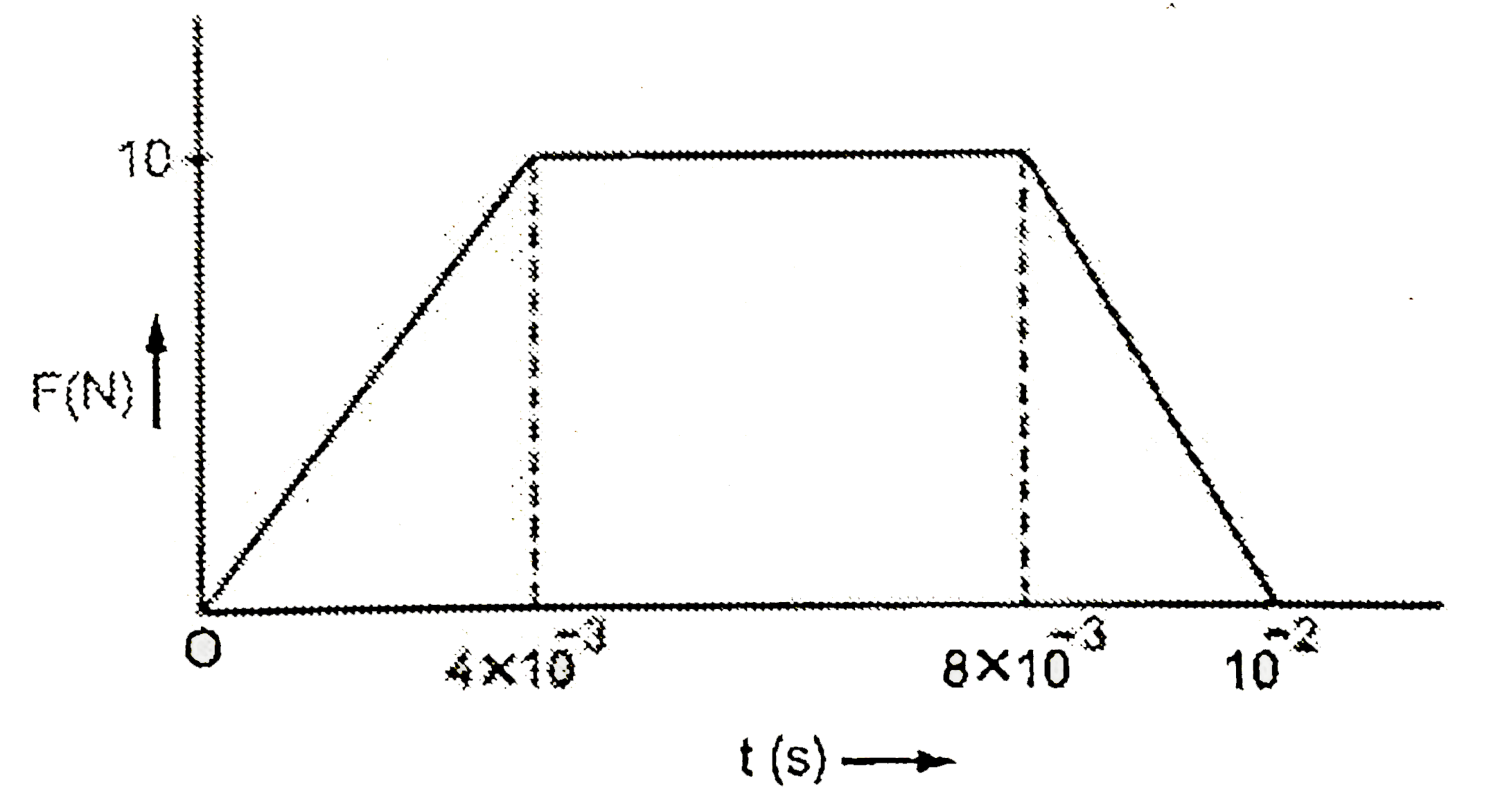A particle of mass 70 g, moving at 50 cm s−1, is acted upon by a variable force opposite to its direction of motion. The force F is shown as a function of time.

After the force stops acting, the particle moves with a speed of
50 cm s−1 in reverse direction
100 cm s−1 in reverse direction
150 cm s−1 in original direction
100 cm s−1 in original direction.
The correct Answer is:A
Step by step video, text & image solution for A particle of mass 70 g, moving at 50 cm s^(-1), is acted upon by a variable force opposite to its direction of motion. The force F is shown as a function of time. After the force stops acting, the particle moves with a speed of by Physics experts to help you in doubts & scoring excellent marks in Class 9 exams.
Updated on:21/07/2023Topper's Solved these Questions
Similar Questions
Knowledge Check
A particle of mas 70g, moving at 50cm/sis acted upon by a variable force opposite to its direction of motion. The force F is shown as a function of time t.
 AIts speed will be 50cm/s after the force stops actingBIts direction of motion will reverseCIts average acceleration will be 1m/s2 during the interval in which the force actsDIts average acceleration will be 10m/s2 during the interval in which the force acts.
AIts speed will be 50cm/s after the force stops actingBIts direction of motion will reverseCIts average acceleration will be 1m/s2 during the interval in which the force actsDIts average acceleration will be 10m/s2 during the interval in which the force acts.A particle of mass m, initially at rest is acted upon by a variable force F for a brief interval of time T. It begins to move with a velocity u after the force stops acting. F is shown in the graph as a function of time. The curve is a semicircle. Then
 Au=πF202mBu=πT28mCu=πF0T4mDu=πF0T2m
Au=πF202mBu=πT28mCu=πF0T4mDu=πF0T2mA particle of mass m , initially at rest , is acted upon by a variable force F for a brief interval of time T. It begins to move with a velocity u after the forrce stops acting . F is shown in the graph as a function of time. The curve is a semicircle.
 Au=πF202mBu=πT28mCu=πF0T4mDF0T2m
Au=πF202mBu=πT28mCu=πF0T4mDF0T2m
A particle of mass m at rest is acted upon by a force P for a time t. Its kinetic energy after an interval t is
View SolutionA block of mass m at rest is acted upon by a force F for a time t. The kinetic energy of block after time t is
View SolutionA particle of mass 2kg moving with a velocity of 3m/s is acted upon by a force which changes its direction of motion by an angle of 90∘ without changing its speed. What is the magnitude of impulse experienced by the particle?
View SolutionA block of mass m at rest is acted upon by a force F for a time t. The kinetic energy of block after time t is
View SolutionA force acting in the opposite direction of an object in motion
View Solution
